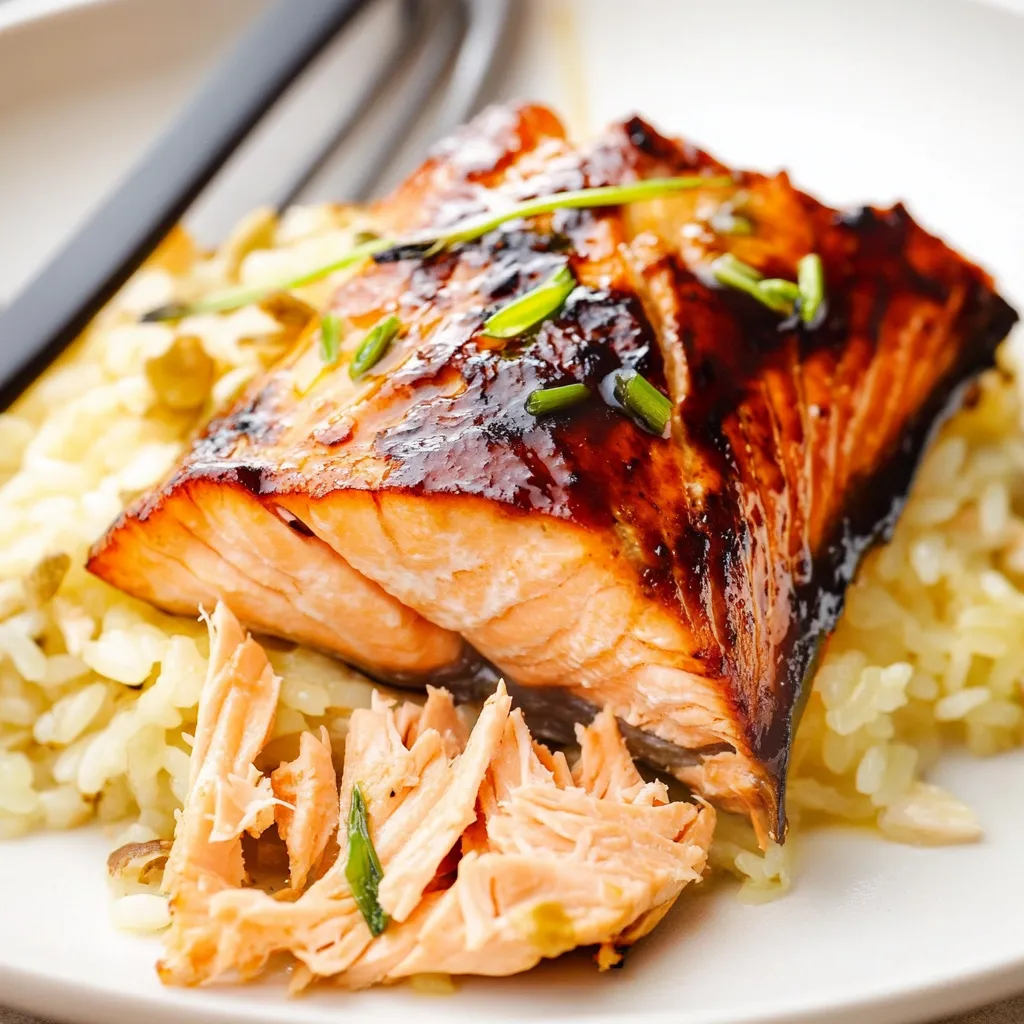 Pin it
Pin it
The delicate balance of sweet and savory miso turns simple salmon into a Japanese food wonder, giving you a caramel-like outer layer while keeping the fish juicy inside. This dish brings authentic Japanese home cooking to your table by mixing the deep umami of miso with traditional seasonings that boost salmon's natural richness.
I first learned about this dish in a small Japanese kitchen where my next-door neighbor showed me how miso marinades really work. I was amazed when she carefully wiped off extra marinade before cooking – that totally changed how my salmon turned out. Now I always do that trick to get that amazing brown crust.
Key Ingredients Breakdown
- Salmon fillets: Go for ones with the skin still on for better results, and make sure they're bright-colored, firm, and smell fresh like the ocean
- White miso paste: The lighter, sweeter kind works wonders here, adding flavor depth without taking over the fish taste
- Sake: Grab cooking sake to soften the fish and wash away any strong fishy smell
- Mirin: This sweet wine makes your finished dish look shiny and beautiful
- Soy sauce: Pick Japanese dark soy for that deep, rich flavor boost
- Roasted sesame oil: You just need a tiny bit to add that warm, nutty background taste
- Fresh ginger: Find pieces that feel solid and smell strong to flavor your rice
Cooking With Miso Wonder
- Making Your Marinade:
- Start by stirring the miso paste until it's completely smooth, then slowly mix in your sake and mirin. You'll see it change into a velvety sauce that smells amazing.
- Getting Your Salmon Ready:
- Wipe each piece completely dry and check for tiny bones. Make shallow cuts in the skin so the flavors can get into the fish while keeping everything together.
- Setting Up Your Oven:
- Put your oven shelf exactly 9 inches below the broiler. This specific distance helps the heat spread just right to get that perfect brown top.
Finishing Touches
- Final Touches:
- Carefully wipe off any extra marinade. This step is super important to stop burning and get that beautiful golden-brown finish.
 Pin it
Pin it
Miso has become my go-to secret weapon in the kitchen. I found out you can keep white miso in the fridge for months without it going bad, so it's always there when I need a flavor boost. The way it transforms regular salmon still surprises me every time I make this dish.
Perfect Pairings
Make your miso salmon part of a complete Japanese meal by serving it with fluffy rice cooked with ginger that soaks up all the yummy sauce. Throw in some quick pickled cucumbers for a fresh crunch, or add steamed edamame beans for an authentic touch. A small bowl of miso soup on the side rounds everything out nicely.
Make It Your Own
Put your own spin on this dish by tweaking how sweet or savory it is. Try using red miso for a stronger, earthier taste, or mix in some grated ginger for extra zing. If you like heat, add a bit of wasabi to the marinade. You can also broil seasonal veggies like asparagus or baby bok choy right next to your salmon.
Keeping It Fresh
Any leftover salmon will stay good in a sealed container for up to two days, though it tastes best when it's fresh. You can make the marinade ahead and keep it separate for up to a week, which makes cooking on busy nights even faster. When you warm up leftovers, cover the fish with foil and heat it slowly in a cool oven to keep it from drying out.
I've tried tons of salmon recipes over the years, but this miso-glazed version stays at the top of my list. The way the miso creates that shiny coating while keeping the fish moist reminds me why Japanese cooking is so amazing in its simplicity. Every time I make this dish, empty plates and happy faces tell me some recipes just stand the test of time.
 Pin it
Pin it
Frequently Asked Questions
- → Which type of miso is best?
- You can pick any kind. White miso is lighter, while darker miso has bolder flavors.
- → Can I marinate it longer?
- Don’t exceed 1-2 hours, or it could end up too salty.
- → How do I know it’s ready?
- Either check for an internal temp of 125-130°F or see if it flakes when touched.
- → Can I skip the sake?
- Sure! Dry white wine or rice vinegar works as an alternative.
- → What’s a good side for this?
- Simple steamed veggies or ginger-infused rice are fantastic options.
